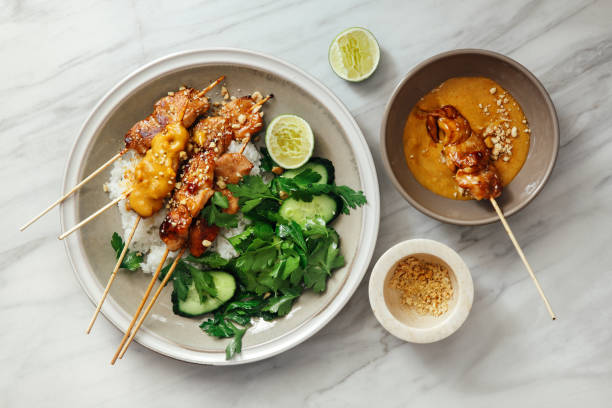Unveiling the Exotic Flavors of Malaysian Cuisine
Malaysian cuisine, a vibrant blend of Malay, Chinese, Indian, and indigenous Borneo cultures, has remained relatively unexplored on the global culinary stage. This piece unravels the enticing tapestry of Malaysian food and drink, from its street food culture to unique cooking techniques and ingredients.

The Cultural Melting Pot of Malaysian Cuisine
Malaysia’s rich history and cultural diversity are mirrored in its culinary scene. Malay, Chinese, and Indian influences mingle with indigenous Borneo traditions to create a unique fusion of flavors. The use of aromatic ingredients such as lemongrass, pandan leaves, and a variety of spices adds depth to the dishes. Coconut milk, often used in curries and desserts, lends a creamy richness that is synonymous with Malaysian cuisine.
Street Food: A Gourmet Adventure
Street food is a significant part of the Malaysian food culture. Hawker centers, bustling with vendors selling a wide array of dishes, are a veritable feast for the senses. Among the must-tries are Char Kway Teow (stir-fried noodles), Nasi Lemak (coconut milk rice), and Satay (grilled skewered meat). These dishes, humble yet full of flavor, offer an authentic taste of Malaysia.
Unique Malaysian Beverages
Malaysia’s beverage scene is as diverse as its food. Teh Tarik, a sweet milk tea pulled repeatedly to create froth, is a local favorite. Another unique drink is the Bandung, a rose syrup and milk concoction, often served chilled. For a refreshing pick-me-up, try the Air Mata Kucing, a longan fruit and winter melon drink, or the Cendol, a dessert drink made with pandan jelly, coconut milk, and palm sugar.
Innovative Cooking Techniques and Ingredients
Malaysian cooking techniques are as varied as the dishes themselves. Bakar (grilling), Rebus (boiling), and Lemang (cooking rice in bamboo) are some of the methods employed. Traditional ingredients like belacan (shrimp paste), kerisik (toasted coconut), and gula Melaka (palm sugar) lend a unique flavor profile to Malaysian dishes.
Rethinking Malaysian Cuisine
Today, chefs are reimagining Malaysian cuisine, infusing traditional dishes with a modern twist while respecting their roots. This innovative approach is expanding the culinary boundaries of Malaysian cuisine, making it more accessible and appealing to a global audience.
Insights into Malaysian Cuisine
- Malaysia is known for its Kopitiams, traditional coffee shops that serve local coffee and toast with Kaya (coconut jam).
- Durian, often referred to as the “King of Fruits,” is a divisive fruit loved and loathed in equal measure for its strong smell and unique taste.
- Rendang, a slow-cooked spicy meat dish, was voted as the world’s most delicious food by CNN in 2011.
- Bunga Kantan (torch ginger flower) is a unique ingredient used in Malaysian cuisine for its floral and slightly spicy flavor.
In conclusion, Malaysian cuisine is a vibrant blend of flavors that reflects the country’s multicultural heritage. Its street food culture, unique beverages, innovative cooking techniques, and the use of distinctive ingredients make it an exciting culinary destination. Whether you’re sampling street food at a bustling hawker center or savoring a contemporary interpretation of a traditional dish, a gastronomic adventure awaits you in the world of Malaysian cuisine.




